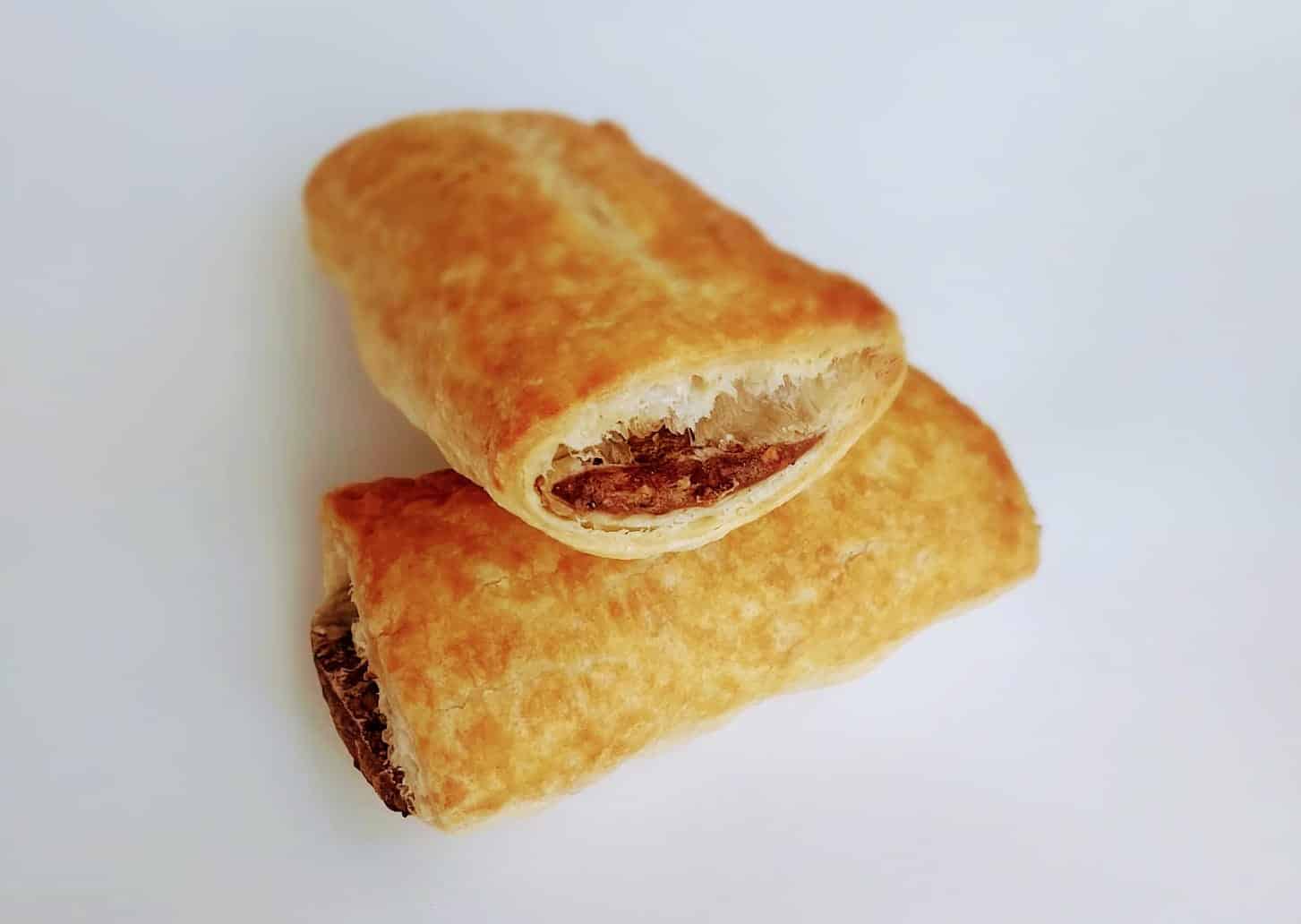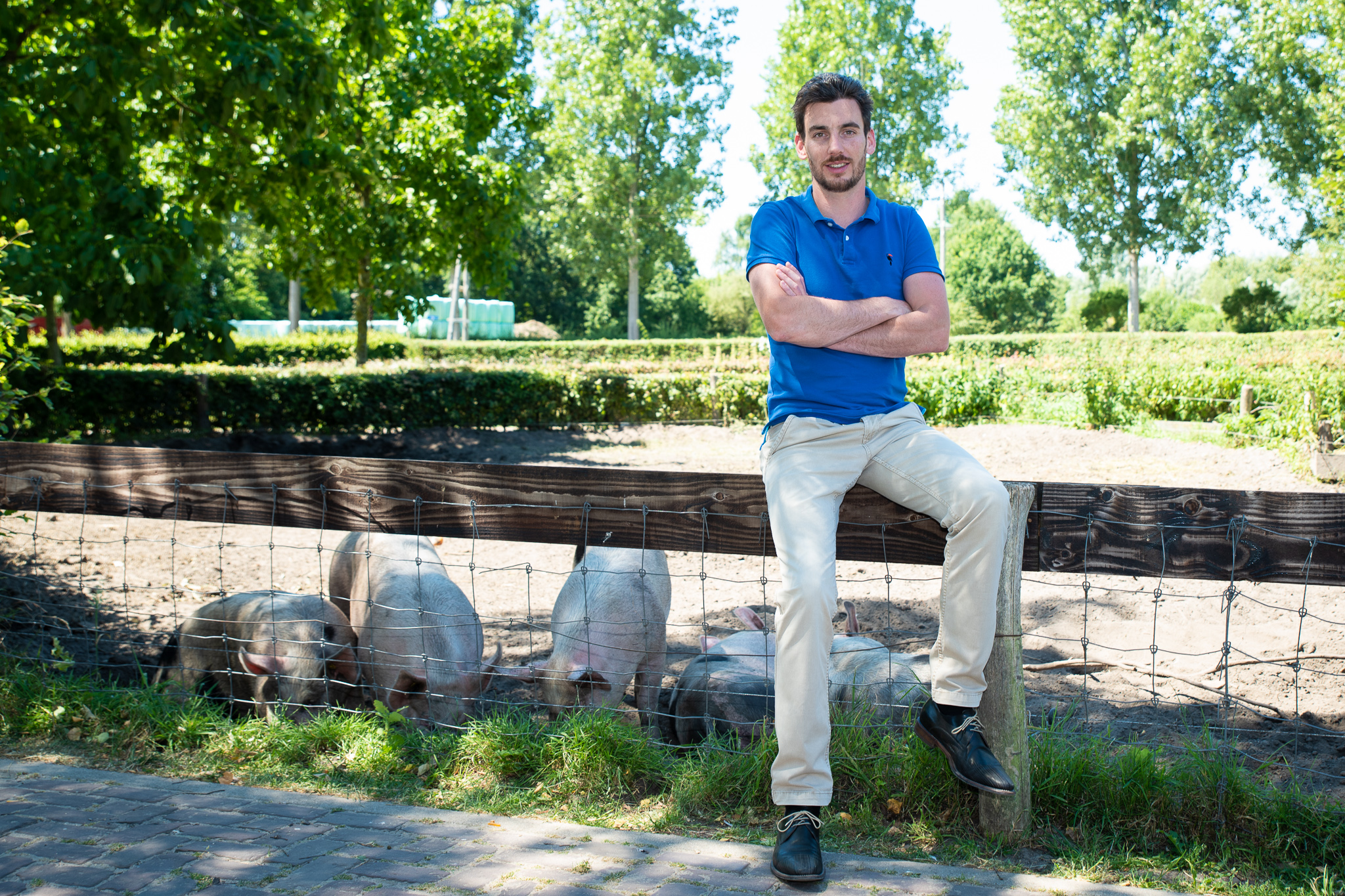
About Zwamcijsje B.V.
- Founders: Mendelt Tillema & Rick Houtepen
- Founded in: 2022
- Employees: 2
- Money raised: €25,000
- Ultimate goal: Become a standard substitute for the sausage roll.
Making one sausage roll releases 431.7 grams of CO2 and consumes nearly five liters of water. Each roll also requires half a square meter of farmland each year. Therefore, it is one of the most heavily polluting bakery products. Mendelt Tillema has found an environmentally friendly alternative. He has developed a vegan sausage roll made from circularly grown mushrooms and they are selling like hotcakes. In this instalment of start-up-of-the-day, Mendelt Tillema talks about the development of his company Zwamcijsje and the roll of the same name.
First of all, tell us about your roll. What is it?
“Zwamcijsje is exactly what the name in Dutch implies. A Dutch sausage roll made from mushrooms. The sausage roll has been a public favorite for years in The Netherlands, but we wanted to make it future-proof. That’s why we used mushrooms for the filling instead of meat. In addition, we do not use dairy butter, but plant-based butter and don’t spread the bread with egg either, but with a pea mixture to get that beautiful brown color.”
How did you come up with the idea?
“I studied plant sciences myself and delved into meat technology. We started with an assignment from that study. We were asked there to think about a future-proof product. Then we came up with mushrooms pretty quickly. The idea of making a sausage roll from mushrooms was actually an obvious one at the time.”
What is it exactly that makes the Zwamcijsje circular?
“The mushrooms we use are actually the stalks of the oyster mushroom. These mushrooms come from the Netherlands and are grown mainly in North Brabant and Limburg. The oyster mushroom grows on straw, which is actually a waste stream. There is so much wood matter in that straw that you can’t use it to feed animals. We use the grain to bake bread, but not much is done with that straw. That’s why we use it to grow our mushrooms. The stalks of the oyster mushroom are too tough for most people. We can put that property to good use. In fact, when we heat the mushroom you get a really nice grooved structure.”

Where does the straw come from?
“The straw comes from Western Europe. We really want everything to be done locally, although that is a step-by-step process. You can’t do everything ‘in-house’ anyhow, because you do need certain machines and specialisms. So, we are now making this product together with several parties and have partnered with VAESS. That’s a food engineering company. They started to help us think about the filling of the roll and how to keep the taste as close as possible to the original sausage roll. They also helped us think about ways to scale up the roll. Then we approached a bakery and they saw the potential of what we’re doing. Finally, we found a company that cleans mushrooms. The whole chain has basically grown naturally this way.”
How do you make a vegan sausage roll that looks like the original?
“You want to create something unique, but at the same time it has to remain recognizable for people who are going to eat the roll. It’s not nice if people are expecting the taste of a sausage roll, but taste something completely different. Therefore, our starting point from the outset has been that people should be able to recognize the mushrooms in the roll, but still have the taste experience of the original sausage roll. One way we do that is with spices. A lot is involved, but we have very good bakers and meat technologists for that.”
What problems did you run into when making the Zwamcijsje?
“Storage and logistics were a major challenge. It’s only when you are able to produce a lot that storage and logistics become affordable. Developing the roll itself actually went extremely well. Thanks to our partners, the basis was very solid from the get-go. It is also no coincidence that the Netherlands is leading the transition towards plant-based food. We have a great deal of knowledge in this country. It is artisanship.”
Was it difficult to secure investment?
“That actually wasn’t too hard. The costs are actually very low. We didn’t put in a lot of money ourselves, but we did put in a lot of time. I’ve noticed that you need a lot of contacts most of all. We started selling it in May and then we went to the bank to ask for an investment. That was pretty easy, because the sales figures looked really positive. It just fits in with the current trend. It’s very clear that things have to change. The sausage roll is very popular, but people know that it is not a green product and that it’s also unhealthy.”
What is your ultimate goal?
“If we want to make this a success, we need to scale up massively. It’s a market where large volumes are needed to really make an impact. I think in the future we will be doing more with mushrooms. They grow into a full crop in just six weeks, so you can harvest them quickly. It also saves a lot in terms of land and you don’t have to source them from far away. I think it’s good to find ways so we can become as self-sufficient as possible. I think it would be very cool if Zwamcijsje eventually becomes the successor to the sausage roll.”
What makes your product better than what’s already on the market?
“We have a very positive story with a great message. Unlike most meat substitutes, we actually do make an effort to tell people that mushrooms are in the roll. If you stress all the time what is not in it, then people get the idea that they are eating a fake product. In that sense, we are taking a different approach. Apart from that, it is a locally grown and circular crop. The taste is naturally very close to the traditional sausage roll. It has a very nice ‘bite’ to it, you just don’t need all that fat anymore.”


